Related Research Articles

Michael John Moorcock is an English writer, particularly of science fiction and fantasy, who has published a number of well-received literary novels as well as comic thrillers, graphic novels and non-fiction. He has worked as an editor and is also a successful musician. He is best known for his novels about the character Elric of Melniboné, which were a seminal influence on the field of fantasy in the 1960s and 1970s.

Richard Burton Matheson was an American author and screenwriter, primarily in the fantasy, horror, and science fiction genres.
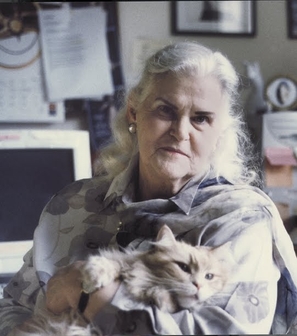
Anne Inez McCaffrey was an American writer known for the Dragonriders of Pern science fiction series. She was the first woman to win a Hugo Award for fiction and the first to win a Nebula Award. Her 1978 novel The White Dragon became one of the first science-fiction books to appear on the New York Times Best Seller list.

Sam Youd was a British writer best known for science fiction written under the name of John Christopher, including the novels The Death of Grass, The Possessors, and the young-adult novel series The Tripods. He won the Guardian Children's Fiction Prize in 1971 and the Deutscher Jugendliteraturpreis in 1976.
Gordon Rupert Dickson was an American science fiction writer. He was inducted into the Science Fiction and Fantasy Hall of Fame in 2000.
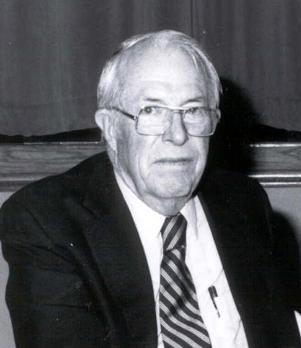
John Stewart Williamson, who wrote as Jack Williamson, was an American science fiction writer, one of several called the "Dean of Science Fiction". He is also credited with one of the first uses of the term genetic engineering. Early in his career he sometimes used the pseudonyms Will Stewart and Nils O. Sonderlund.
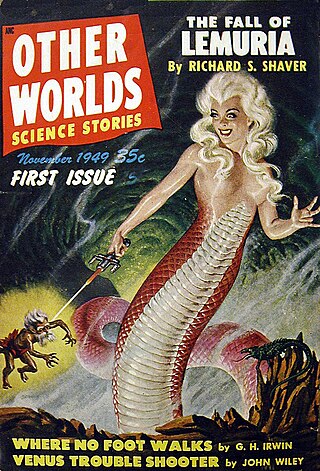
Other Worlds, Universe Science Fiction, and Science Stories were three related US magazines edited by Raymond A. Palmer. Other Worlds was launched in November 1949 by Palmer's Clark Publications and lasted for four years in its first run, with well-received stories such as "Enchanted Village" by A. E. van Vogt and "Way in the Middle of the Air", one of Ray Bradbury's "Martian Chronicle" stories. Since Palmer was both publisher and editor, he was free to follow his own editorial policy, and presented a wide array of science fiction.

John Brian Francis "Jack" Gaughan, pronounced like 'gone', was an American science fiction artist and illustrator and multiple winner of the Hugo Award in the category of Best Professional Artist.
This is a list of short stories by American writer Isaac Asimov. Asimov is principally known for his science fiction, but he also wrote mystery and fantasy stories.

Esther Mona Friesner-Stutzman, née Friesner is an American science fiction and fantasy author. She is also a poet and playwright. She is best known for her humorous style of writing, both in the titles and the works themselves. This humor allows her to discuss with broader audiences issues like gender equality and social justice.

Sarah Bear Elizabeth Wishnevsky is an American author who works primarily in speculative fiction genres, writing under the name Elizabeth Bear. She won the 2005 John W. Campbell Award for Best New Writer, the 2008 Hugo Award for Best Short Story for "Tideline", and the 2009 Hugo Award for Best Novelette for "Shoggoths in Bloom". She is one of a small number of writers who have gone on to win multiple Hugo Awards for fiction after winning the John W. Campbell Award for Best New Writer.

The Eyes of the Overworld is a picaresque fantasy fix-up novel by American writer Jack Vance, published by Ace in 1966, the second book in the Dying Earth series that Vance inaugurated in 1950. Retitled Cugel the Clever in its Vance Integral Edition (2005), the story takes place in Vance's Dying Earth setting, where the Sun is dying and magic and technology coexist. It features the self-proclaimed Cugel the Clever in linked episodic stories. Cugel is an anti-hero character; while he is typically a crafty scoundrel who seeks to turn a profit from a situation, he retains some good values at times. In the novel, Cugel is caught stealing from a wizard, who forces Cugel to travel to a faraway realm to find a rare magical jewel.
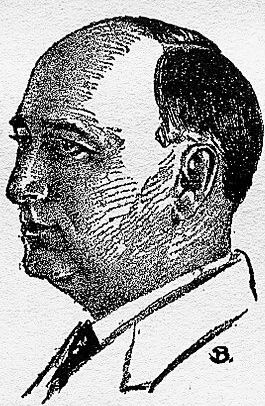
David Henry Keller was an American writer who worked for pulp magazines in the mid-twentieth century, in the science fiction, fantasy, and horror genres. He was also a psychiatrist and physician to shell-shocked soldiers during World War I and World War II, and his experience treating mentally ill people is evident in some of his writing, which contains references to mental disorders. He initially wrote short stories as a hobby and published his first science fiction story in Amazing Stories in 1928. He continued to work as a psychiatrist while publishing over sixty short stories in science fiction and horror genres. Technically, his stories were not well-written, but focused on the emotional aspects of imaginative situations, which was unusual for stories at the time.

The Opener of the Way is a collection of fantasy and horror short stories by American writer Robert Bloch. It was released in 1945 and was the author's first book. It was published by Arkham House in an edition of 2,065 copies. Most of the stories had appeared in the magazine Weird Tales in the 1930s and 1940s, and some of the stories are part of the Cthulhu Mythos.

The Anome is a science fiction novel by American writer Jack Vance, first published in 1973 ; it is the first book in the Durdane series of novels.
Manning Lee Stokes was an American novelist who used a large number of pseudonyms. He specialized in paperback fiction, especially in the genres of mystery, detective fiction, westerns, spy fiction and science fiction. Stokes is also notable as one of the innovators of graphic novels.
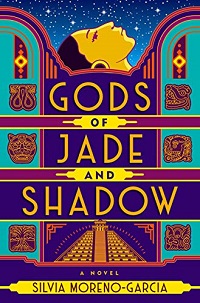
Silvia Moreno-Garcia is a Mexican and Canadian novelist, short story writer, editor, and publisher.
Poul William Anderson was an American fantasy and science fiction author who was active from the 1940s until his death in 2001.
Since the characters inception in the 1960s, Spider-Man has appeared in several forms of media, including novels and book series.
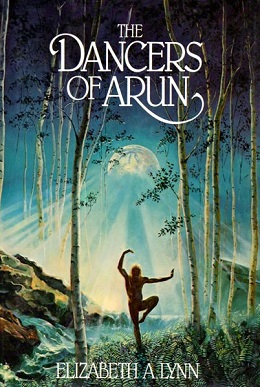
The Dancers of Arun is a fantasy novel by American writer Elizabeth A. Lynn, published in 1979.
References
- ↑ "Publication: The Magazine of Fantasy and Science Fiction, February 1971". www.isfdb.org.
- ↑ "Publication: The Magazine of Fantasy and Science Fiction, March 1971". www.isfdb.org.
- ↑ "Publication: The Magazine of Fantasy and Science Fiction, July 1972". www.isfdb.org.
- ↑ "Publication: The Magazine of Fantasy and Science Fiction, August 1972". www.isfdb.org.
- ↑ "Publication: The Magazine of Fantasy and Science Fiction, May 1973". www.isfdb.org.
- ↑ "Publication: The Magazine of Fantasy and Science Fiction, June 1973". www.isfdb.org.